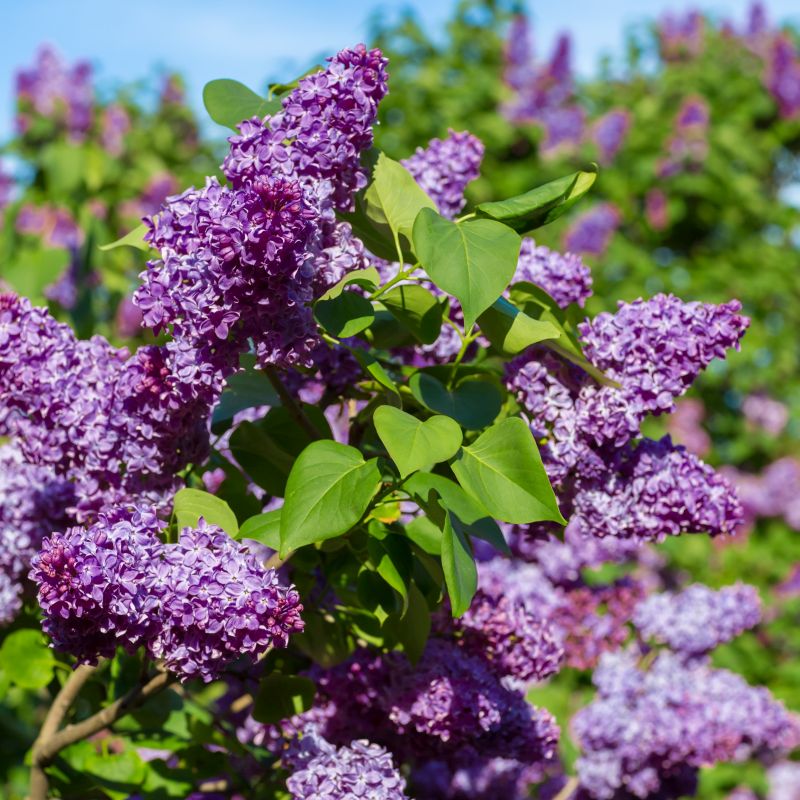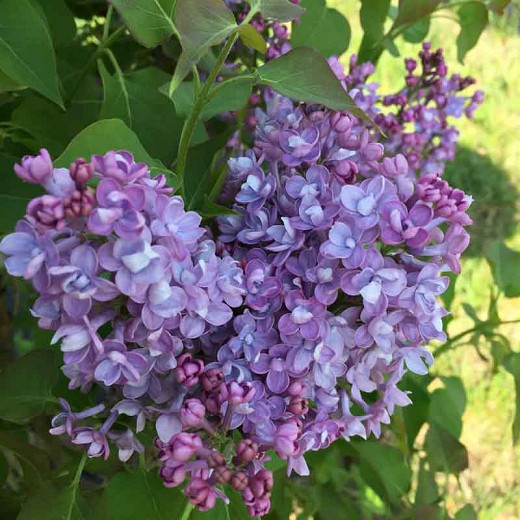The Common Lilac: A Beautiful And Easytogrow Shrub
The Common Lilac: A Beautiful and Easy-to-Grow Shrub
The common lilac (Syringa vulgaris) is a beloved shrub that is known for its beautiful flowers and sweet fragrance. It is native to Europe and Asia, but it has been cultivated in North America for centuries. Lilacs are easy to grow and care for, making them a popular choice for home gardens.
Features of the Common Lilac
Common lilacs are deciduous shrubs that typically grow 12 to 16 feet tall and 8 to 12 feet wide. They have dark green, heart-shaped leaves that emerge in the spring and turn yellow or orange in the fall. The flowers are produced in large, showy clusters that can be up to 12 inches long. The flowers come in a variety of colors, including white, purple, pink, and blue.
Lilac Bloom Time
Lilacs typically bloom in the spring, from late April to early June. The exact bloom time can vary depending on the variety of lilac and the climate. In colder climates, lilacs may bloom later in the spring.
Lilac Fragrance
One of the most distinctive features of the common lilac is its sweet fragrance. The fragrance is produced by the flowers and is strongest when the flowers are in full bloom. The fragrance of lilacs is often described as being floral, sweet, and intoxicating.
Growing Lilacs
Common lilacs are easy to grow and care for. They prefer full sun but can tolerate partial shade. They are also relatively drought tolerant once established. Lilacs do not require a lot of fertilizer, but they may benefit from a light application of compost or manure in the spring.
Pruning Lilacs
Lilacs should be pruned after they have finished blooming. This will help to keep the shrubs healthy and encourage new growth. Lilacs can be pruned to any shape or size, but they are often pruned into a loose, mounded form.
Diseases and Pests
Common lilacs are relatively resistant to diseases and pests. However, they may be susceptible to a few problems, such as aphids, powdery mildew, and lilac borers. If you notice any problems with your lilacs, it is important to treat them promptly.
Lilacs as Cut Flowers
Lilacs make beautiful cut flowers. They can be cut and arranged in bouquets or used to decorate your home. Lilac flowers will typically last for several days in a vase.
Lilacs as Gifts
Lilacs are often given as gifts. They are a popular choice for Mother's Day, graduations, and other special occasions. Lilacs are a thoughtful and appreciated gift that will bring joy to the recipient.
Conclusion
The common lilac is a beautiful and easy-to-grow shrub that is perfect for any garden. It is a versatile plant that can be used in a variety of ways, from adding color and fragrance to your landscape to creating stunning cut flower arrangements. If you are looking for a low-maintenance and trouble-free shrub, the common lilac is a great option.
If you're looking for more information about the common lilac, I recommend visiting the Garden Wiki. This website has a wealth of information about lilacs, including their history, cultivation, and care. You can also find information about different types of lilacs, as well as photos and illustrations.
The Garden Wiki is a great resource for anyone who wants to learn more about lilacs. The information is presented in a clear and concise way, and the images are beautiful. I highly recommend checking it out if you're interested in lilacs.
FAQ of common lilac
1. How long does it take for a common lilac to bloom?
Most common lilacs start blooming after 3-4 years, but some may take as long as 6-7 years. The amount of time it takes for a lilac to bloom depends on a number of factors, including the variety of lilac, the climate, and the care that the plant receives.
2. How do I encourage my lilac to bloom?
There are a few things you can do to encourage your lilac to bloom:
- Plant your lilac in full sun. Lilacs need at least 6 hours of sunlight per day to bloom well.
- Fertilize your lilac in the spring. Use a balanced fertilizer, such as 10-10-10, and follow the directions on the label.
- Water your lilac deeply and regularly, especially during the first year after planting.
- Prune your lilac after it blooms. This will help to keep the plant healthy and encourage new growth.
3. How do I propagate lilac?
There are a few ways to propagate lilac. One way is to take cuttings. To do this, wait until late spring or early summer when the new growth is soft and pliable. Cut a 4-6 inch piece of new growth from the lilac, making sure to include a node. Remove the leaves from the bottom half of the cutting. Dip the bottom of the cutting in rooting hormone and plant it in a pot of well-draining potting mix. Keep the soil moist and the cutting in a warm, sunny spot. In a few weeks, you should see roots start to form. Once the roots are established, you can transplant the lilac into the ground.
4. How do I care for a lilac tree?
Lilac trees are relatively low-maintenance plants. However, there are a few things you can do to keep them healthy and looking their best:
- Water your lilac tree deeply and regularly, especially during hot, dry weather.
- Fertilize your lilac tree in the spring with a balanced fertilizer, such as 10-10-10.
- Prune your lilac tree in the spring after it blooms. This will help to keep the tree healthy and encourage new growth.
- Protect your lilac tree from pests and diseases. If you see any problems, consult with a professional arborist.
5. What are some common problems with lilacs?
Lilacs are susceptible to a few common problems, including:
- Lilac leaf miner: This insect tunnels through the leaves of lilacs, causing them to turn yellow and drop.
- Lilac borer: This insect bores into the stems of lilacs, causing them to wilt and die.
- Lilac rust: This fungus causes orange or brown spots to form on the leaves of lilacs.
- Lilac wilt: This disease is caused by a bacteria that attacks the roots of lilacs, causing them to wilt and die.
If you see any problems with your lilac, consult with a professional arborist for diagnosis and treatment.
Image of common lilac
- White common lilac: This lilac has white flowers with a delicate fragrance. It is a popular choice for gardens and landscaping because it is easy to care for and blooms in early spring.

- Purple common lilac: This lilac has deep purple flowers that are a beautiful addition to any garden. It is a relatively hardy plant and can tolerate a wide range of climates.

- Pink common lilac: This lilac has pale pink flowers that are perfect for a romantic garden. It is a relatively short plant, so it is a good choice for smaller gardens.

- Double common lilac: This lilac has double flowers that are even more fragrant than single flowers. It is a bit more difficult to care for than single-flowered lilacs, but it is worth the effort for the stunning blooms.

- Blooming common lilac: This image shows a common lilac in full bloom. The flowers are a beautiful shade of purple and the fragrance is intoxicating.
Post a Comment for "The Common Lilac: A Beautiful And Easytogrow Shrub"